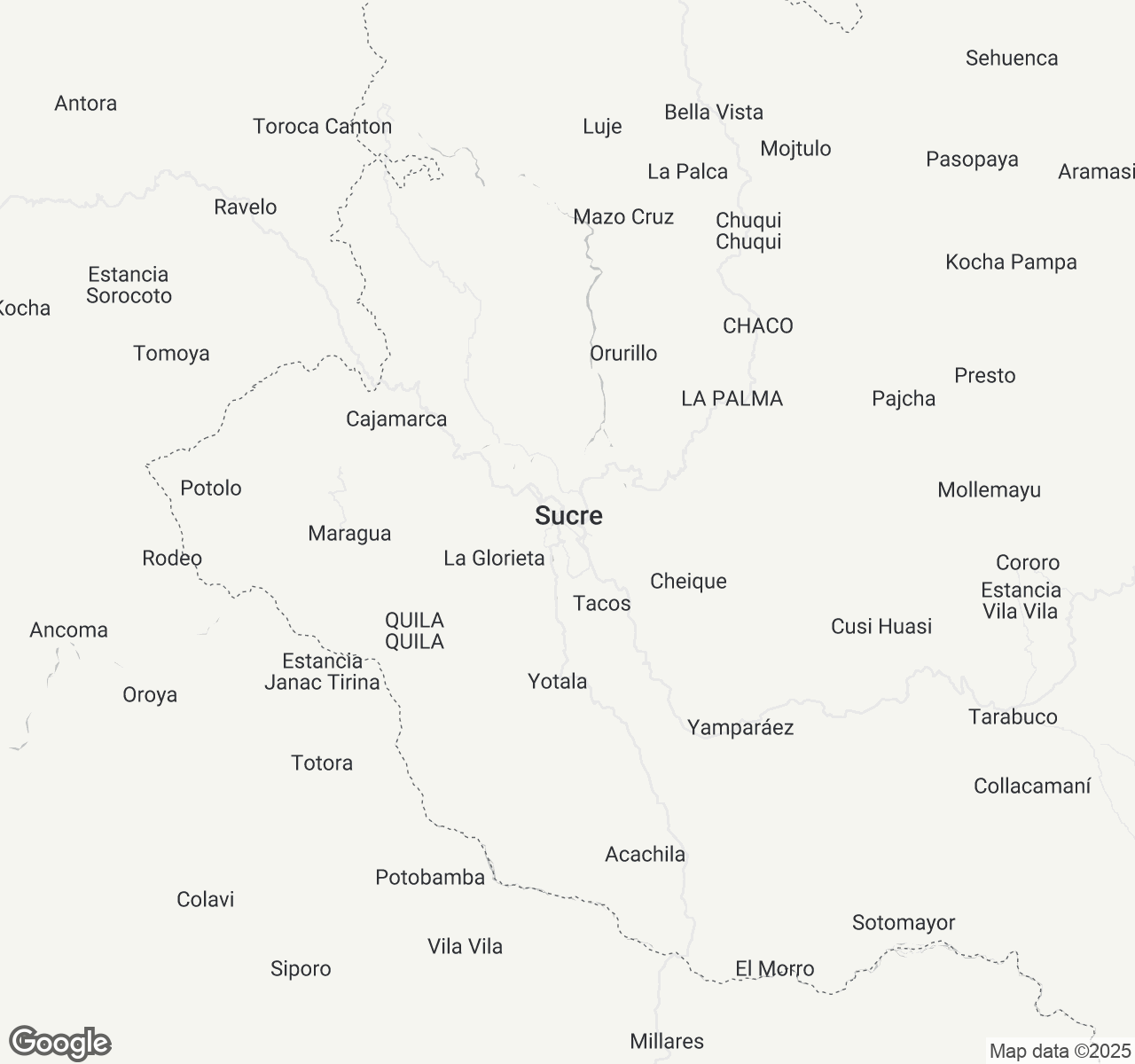
Things to Do in Sucre
Discover the best of Sucre
Plan Your Trip
Essential guides for timing and budgeting
Top Things to Do in Sucre
Discover the best activities and experiences. Book now with our trusted partners and enjoy hassle-free adventures.
Your Guide to Sucre
About Sucre
located in the Bolivian Andes at 2,800 meters, Sucre unfolds like a perfectly preserved colonial manuscript written in whitewashed walls and terracotta roofs. Known as the 'White City,' Bolivia's constitutional capital enchants visitors with its harmonious blend of Spanish colonial architecture and indigenous heritage. Cobblestone streets wind past baroque churches and elegant plazas, where the gentle hum of university life mingles with the ancient rhythms of Quechua culture. Here, time moves at the pace of afternoon shadows stretching across Plaza 25 de Mayo, where locals gather beneath jacaranda trees and students debate philosophy over steaming cups of api morado. The city's intellectual soul—home to one of the Americas' oldest universities—permeates every corner, from bookshops tucked into colonial courtyards to art galleries showcasing contemporary Bolivian talent. Sucre offers an intimate encounter with authentic Bolivia, where every weathered doorway and hand-carved balcony tells stories of revolution, independence, and enduring cultural pride.
Travel Tips
Transportation: Book overnight buses to La Paz through Flota Copacabana or Trans Copacabana for comfort and safety. Within Sucre, walk the compact historic center or take micro buses (1.50 BOB) for longer distances. Avoid unlicensed taxis—use Radio Taxi services instead.
Money: Bring USD cash as ATMs are limited and often empty on weekends. Exchange money at casas de cambio on Calle Españ for better rates than banks. Most restaurants accept only cash; budget 150-300 BOB daily for meals and activities.
Cultural Respect: Always ask permission before photographing indigenous people, especially elderly women in traditional dress. Learn basic Quechua greetings like 'Allillanchu' (how are you?). Dress modestly when visiting churches and remove hats as a sign of respect.
Food Safety: Eat at busy local markets like Mercado Central during peak hours for freshest ingredients. Try salteñas before 10 AM when they're freshly baked. Drink bottled water and avoid raw vegetables unless at established restaurants catering to tourists.
When to Visit
Sucre enjoys a mild subtropical highland climate year-round, making it Bolivia's most pleasant city weather-wise. The dry season (May-October) offers crisp, sunny days with temperatures ranging 18-22°C (64-72°F) and cool nights dropping to 5-8°C (41-46°F). This peak season sees 20-30% higher accommodation prices but guarantees clear skies for exploring. June-August brings the coolest temperatures but busy blue skies perfect for photography. The wet season (November-April) features afternoon thunderstorms and temperatures of 20-25°C (68-77°F), with January-February receiving 100-150mm monthly rainfall. Prices drop 25-40% during this period, and morning exploration before 2 PM typically avoids downpours. Key festivals include Carnaval de Sucre (February/March), featuring colorful parades and water fights, and Fiesta de la Virgen de Guadalupe (September 8) with traditional dances. May and September offer the perfect compromise: pleasant weather, moderate prices, and fewer crowds. Budget travelers should target November-January for the best deals, while photographers and outdoor enthusiasts will prefer June-August despite higher costs. University vacation periods (December-February, July) affect the city's energy and accommodation availability.

Sucre location map